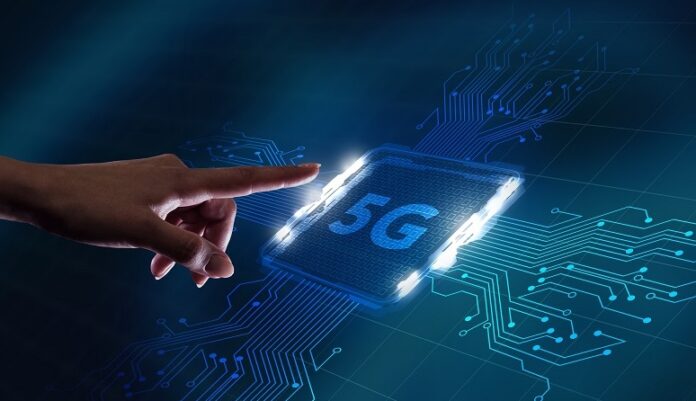5G is the fifth generation of mobile communications, which opens up new possibilities for technological progress and innovation. The introduction of 5G is expected to accelerate the development of the Internet of Things. But attackers are already looking for vulnerabilities in the new technology and preparing large-scale attacks. A future with 5G technology is unthinkable without improvements in cybersecurity.
The transition from 4G to 5G will affect almost everyone who uses mobile communications. Therefore, it is important to understand how secure this network is and where it is vulnerable.
The New Generation of Mobile Communications
5G is short for the fifth generation, which is the “fifth generation” of wireless cellular communication.
Each of the first four generations has taken communications to the next level, with 3G and 4G as the main goal to improve mobile data transmission. This trend is also true for 5G: The new technology expands access to broadband mobile data. At first, 5G will be used alongside 4G, but will eventually replace the fourth-generation completely.
How 5G Works
Without going into too much detail, 5G transmits larger amounts of data over shorter distances than 4G LTE. This increases data speeds and connection stability, as well as the network itself, even when you’re on the move. The 5G network operates in a new frequency range and can serve more devices. In addition, the new technology uses less energy.
Benefits of 5G
4G LTE technology provides excellent connectivity, but it can no longer handle the existing number of mobile devices, and our needs continue to grow. LTE networks in major cities are now congested, and there are regular connectivity problems during peak times during the day. And the evolution of Internet-connected “smart” devices dictates the need for a faster and more powerful system that can serve the billions of gadgets that already exist today. During this evolution, the mobile Internet will require fewer resources, become faster, cheaper, and be able to support more devices than it does now.
The Possibilities of 5G
Of course, the quality of mobile Internet will improve. In addition, the fifth-generation broadband will please us with new features. Here are the main ones.
- The mass introduction of the Internet of Things (IoT) will contribute to the development of industrial and household technologies. Many IoT devices have already entered our lives, but their use is limited by the capabilities of Internet platforms. With 5G networks, battery-operated devices will stay connected without special advanced settings. The new wireless technology will allow them to be used in remote, poorly equipped, or hard-to-reach areas. Every device, from smart thermostats and speakers to sensors in industrial trucking systems and city power grids, will have a place.
- Smart Cities and Industry 4.0 will make our lives more convenient and safer, and our work more productive and efficient. The Internet of Things, combined with 5G, is a new level of control over the urban infrastructure. This approach will also be used to intelligently automate industrial operations – dynamically redistributing work processes.
The Difference Between 4G and 5G
There are several significant differences between these technologies, whereby 5G can do what 4G LTE cannot.
5G has the following advantages.
- 5G is faster than 4G, transmitting more bits per second over the network. If it used to take you several minutes to download a video, now the files will download in seconds. The same goes for launching games. That is if before, going to the online casino NZ you could take a few minutes to start the game, but with 5G it happens in seconds.
- 5G has less network latency than 4G, which means the signal travels faster across the network. The faster your devices “communicate” with the network, the faster you get your data.
- 5G consumes less power than 4G because the new technology can quickly switch to a lower power mode when cellular service is not in use. Therefore, devices can last longer on the same battery capacity.
- 5G provides a more reliable and faster connection than 4G because the new networks have increased bandwidth and use more connection points. As the load on the network decreases, the cost of data transfer can also go down.
- 5G serves more devices than 4G because it uses an extended range of radio waves. 5G solves the problem of slow connections when a large number of users connect to the network at the same time.
Overall, 5G is a big step forward for mobile technology. It’s like moving from modems to high-speed broadband – we’re about to discover new mobile Internet options.
The Future of 5G and Information Security
To reduce the vulnerability of the nation’s mobile networks, developers will have to carefully work out the 5G security aspects.
First and foremost, the development of cybersecurity principles for 5G networks is needed. Providers will have to work on software protection against threats we might encounter on a 5G network. They will have to work with IT companies to develop solutions for encryption, network monitoring, and other protections.
Manufacturers need the motivation to improve the level of protection of their products. The overall level of protection of the 5G network is determined by the level of protection of its weakest links. But the cost of developing and bringing to market devices with a higher level of protection is not good for manufacturers. This is especially true for low-cost products, such as baby smartwatches and cheap baby monitors. If the benefits exceed the final costs, it motivates manufacturers to improve the security of their devices.
Consumers need to be educated about cybersecurity rules for IoT devices. The wide variation in security levels means that product labeling standards may be required. Since consumers have no way of knowing how secure a particular gadget is, it may be incumbent on smart device manufacturers to label them. The US Federal Communications Commission is classifying other types of radio transmissions and may soon include IoT devices in that classification. In addition, users need to be explained that software updates improve the security of all Internet-connected gadgets.
Work on strengthening security is being done in parallel with the deployment of the first 5G networks. But in order to thoroughly work out the ways of protection, we need to get real results first, so the work will continue after the introduction of 5G.
How to Prepare for the 5G Era
The buzz around 5G networks may make it seem like the 5G era has already arrived, but in fact, you still have time to prepare. The adoption of the new technology will be a long one, although some changes are already starting to appear. We recommend that you take care of your own security and privacy.
- Install antivirus on all your devices. Solutions such as Kaspersky Total Security will prevent infection of your gadgets.
- Use a VPN to keep your data private and hide your browsing history.
- Use strong passwords. Always use the most complex passwords possible. The best password is a long set of random characters of different types. Use lowercase and uppercase letters, special characters, and numbers.
- Change the default administrator account passwords on all IoT devices. Follow the manufacturer’s instructions to change the administrator account name and password on all gadgets. If the required information is not in the manual, contact the manufacturer directly.
- Install the latest security patches on all IoT devices. Regularly update your cell phone, computer, all smart home devices, and even your car’s infotainment system – anything that connects to the Internet, uses Bluetooth, or other communication protocols. Update apps, firmware, the operating system, etc.








